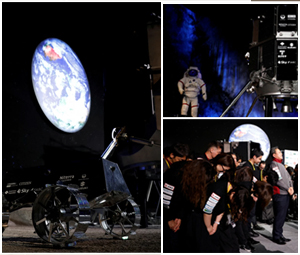
As per Reuters, Japanese startup ispace inc (9348.T) says that their attempt to create the first private moon landing has failed as they lost contact with their Hakuto-R Mission 1 (M1) lander. They have reached the conclusion that Hakuto-R Mission 1 (M1) lander had most likely crashed on the lunar surface.
On a company live stream, founder and Chief Executive Takeshi Hakamada told “We lost communication, so we have to assume that we could not complete the landing on the lunar surface”.
In a week, this was the second time private space development faced a setback. The first one was when SpaceX’s Starship rocket exploded spectacularly minutes after soaring off its launch pad.
Till now no private firm has succeeded with a lunar landing. Only the United States, the former Soviet Union, and China have soft-landed spacecraft on the moon. India and a private Israeli company too had attempted a lunar landing in the recent year but both missions ended in failure.
On Wednesday morning, shares in ispace which delivers payloads like rovers to the moon and sells related data were untraded. But they did indicate falling by their daily limit. The ispace stock debuted on the Tokyo Stock Exchange just two weeks back. Since then their asset value has doubled.
Hirokazu Matsuno, the top government spokesperson of Japan told that even though the mission went unaccomplished, the country desired ispace to “keep trying” as its efforts were remarkable to the development of the domestic space industry.
Japan has already set itself a target that by the late 2020s, they will send Japanese astronauts to the moon. However, Japan faced some setbacks recently. In October, its solid-fuel Epsilon rocket also failed after its launch. When its new medium-lift H3 rocket’s second engine failed to ignite in the last month, the national agency had to destroy it.
HALT ON A SKI SLOPE
The M1 lander was launched to space on a SpaceX rocket from Cape Canaveral, Florida. At about 12:40 p.m., it appeared set to autonomously touch down. An animation based on live telemetry data at Eastern time (16:40 GMT Tuesday), showed it approaching close enough as 90 meters (295 feet) from the lunar surface.
But mission control had lost contact with the lander within the expected touchdown time. This Thus, engineers looked anxious over the live stream. This was because they were waiting for the signal confirmation of its fate which never came.
Hakamada told that their engineers would continue to investigate the situation. He also added that at the present moment, they are very proud of the fact that they could achieve various things during this Mission 1.
He also said that the lander completed eight out of 10 mission objectives in space. They expect that it will give valuable data for the next landing attempt in 2024.
The 2.3-meter-tall M1 started its landing phase nearly an hour prior to the planned touchdown. It gradually tightened its orbit around the moon from 100 km (62 miles) above the surface to nearly 25 km, traveling at nearly 6,000 km/hour (3,700 mph).
Chief Technology Officer Ryo Ujiie has said that slowing the lander to the right speed at high velocity against the gravitational pull of the moon. This is something really challenging like applying the brakes of a bicycle right you are at the edge of a ski-jumping slope.
The craft had intended for a landing site at the edge of Mare Frigoris which falls on the northern hemisphere of the moon. This was the site where it would have deployed a two-wheeled, baseball-sized rover. The Japan Aerospace Exploration Agency- Tomy Co Ltd (7867.T) and Sony Group Corp (6758.T) developed this two-wheeled, baseball-sized rover. It also had plans to deploy a four-wheeled rover dubbed Rashid from the United Arab Emirates.
The lander did also carry an experimental solid-state battery (5334.T) along with other devices to evaluate their performance on the moon. Niterra Co Ltd made this experimental solid-state battery.
Mitsui Sumitomo Insurance Co, an MS&AD Insurance Group (8725.T) unit, had insured the mission. Ispace also added that it might get some compensation.
Take a sneak peek at this article by BBC countries launching missions to the moon and beyond in 2023.
- LinkedIn Under Fire for Scraping User Content to Train AI Models - October 18, 2024
- Kickstarter Projects Will Soon Be Required to Disclose Any Usage of AI - August 7, 2023
- LinkedIn Is Working on Ad Product Testing For Video Streaming Services - June 16, 2023




